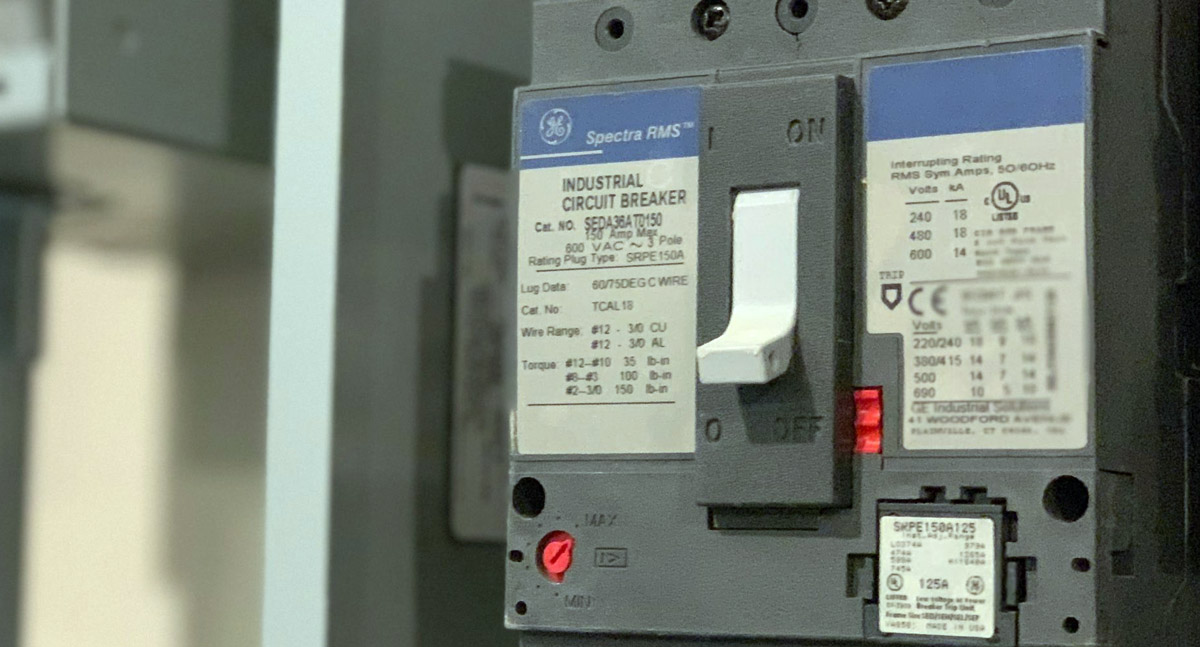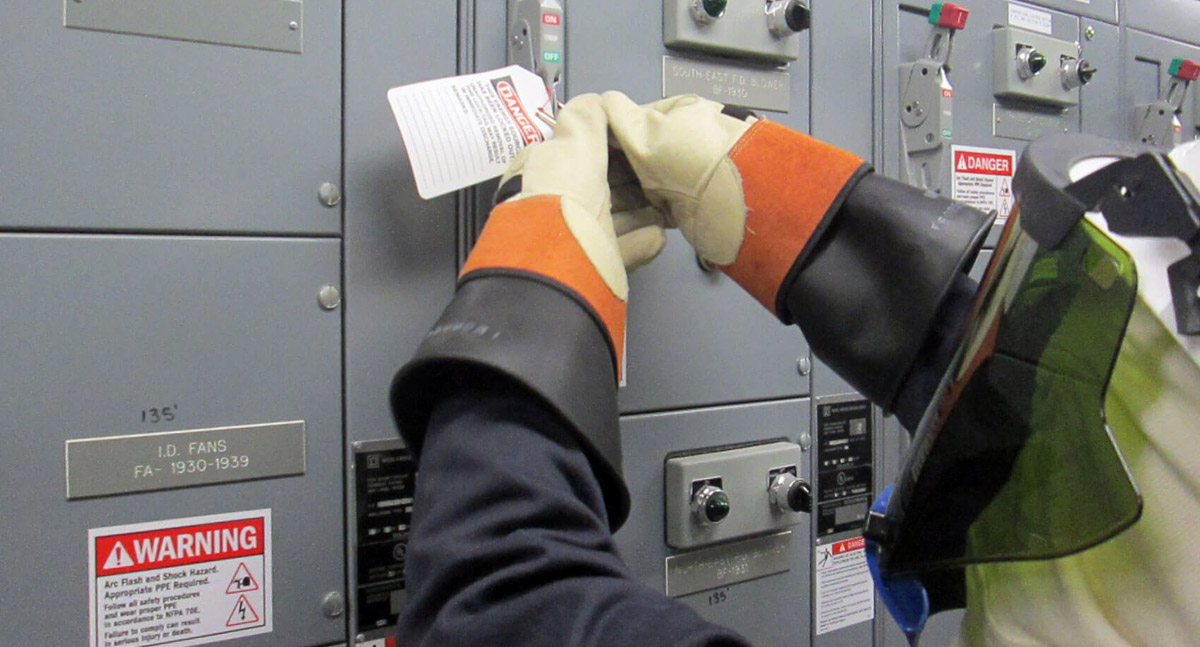
Electrical safety is a critical aspect that should never be overlooked in any industry. Whether you operate in manufacturing, construction, healthcare, or any other field, understanding the importance of electrical safety measures is critical to creating a secure working environment for your employees and maintaining a smooth workflow.
Shockingly, statistics reveal that electrical accidents continue to occur far too often, resulting in severe injuries, fatalities, and financial loss. These accidents harm individuals and negatively impact businesses by causing work disruptions, increased insurance premiums, legal disputes, and damaged reputation.
Did you know? According to the Electrical Regulatory Authorities Council, there were nine electrical deaths from eight recorded incidents in Australia and New Zealand during 2021-2022. This is equivalent to 0.29 deaths per million people (dmp) which is 0.26 dmp higher than the previous period.
Hazards can include exposed live parts, faulty or damaged equipment, improper use of appliances, water contact with electrical sources, and insufficient knowledge about electrical safety.
By educating yourself on electrical safety protocols and implementing them diligently, you can drastically reduce avoidable electrical incidents, protect your employees, and safeguard your organisation’s overall well-being. This article aims to shed light on the significance of electrical safety in various industries and highlight the real-life impact of electrical accidents on businesses.
Regulations and Licensing for Electrical Safety
When it comes to electrical safety, various government regulations are in place to ensure individuals’ well-being and prevent potential hazards. Additionally, obtaining proper licenses and certifications is crucial in maintaining high electrical safety standards.
Government Regulations for Electrical Safety
Government regulations for electrical safety are designed to establish guidelines and protocols that guarantee the safe installation, operation, and maintenance of electrical systems. These regulations encompass many areas, including residential, commercial, and industrial.
One of the main objectives of government regulations is to minimise the risk of electrical accidents, fires, and other hazards that can lead to property damage, injuries, or even fatalities. Compliance with these regulations is crucial for individuals, businesses, and organisations to ensure the safe functioning of electrical systems.
Within Australia, some Electrical standards and rules include:
- Electrical installations (Australian/NewZealand Wiring Rules 3000:2018)
- In-service safety inspection and testing of electrical equipment and RCDs
- Essential safety requirements for electrical equipment
- Electrical installations – Construction and demolition sites
- Standard for Electrical Safety in the Workplace
Licenses and Certifications
In addition to adhering to government regulations, obtaining proper licenses and certifications is essential for individuals working with electrical systems. These licenses and certifications demonstrate the competence and expertise of professionals in electrical safety.
By acquiring the necessary licenses and certifications, professionals prove they possess the knowledge, skills, and experience to carry out electrical work safely. It also ensures that individuals are up-to-date with the latest industry standards and best practices in electrical safety.
How do you obtain an electrical license?
Obtaining electrical licenses typically involves several steps that vary depending on the jurisdiction and the type sought. Generally, it entails completing the required education and training, passing examinations, and fulfilling specific experience criteria.
Education and training for electrical licenses usually include coursework covering electrical code, electrical theory, safety practices, and electrical system design. Additionally, some jurisdictions may require applicants to fulfil an apprenticeship or on-the-job training program to gain practical experience.
After completing the necessary education and training, individuals must pass examinations to demonstrate their knowledge and understanding of electrical safety principles. The examination may assess theoretical knowledge and practical electrical installation, maintenance, and troubleshooting skills.
In some cases, applicants are also required to provide evidence of specific experience in the electrical field. This experience requirement ensures that individuals have acquired hands-on expertise to guarantee electrical safety in various scenarios.
Once all requirements are met, individuals can apply for their electrical license. The application process usually involves submitting the necessary documentation, paying applicable fees, and undergoing background checks or other screenings.
Obtaining an electrical license is not just a formality. It signifies a commitment to electrical safety and professionalism in the field. Individuals must stay informed about any updates or renewals required for maintaining their licenses to ensure continued compliance with electrical safety regulations.
Did you know? In New South Wales, you need an electrical licence before you can do any electrical wiring work regardless of the cost of the work or whether the work is residential, commercial, or industrial. To find out more about how to obtain an electrical license, read this page on the NSW Fair Trading website.
Types of Electrical Hazards
Electrical hazards can be found in various settings, from homes and offices to industrial facilities. Being aware of these hazards is essential to mitigate the risks effectively. Some common electrical hazards include:
- Faulty wiring or inadequate electrical systems
- Exposed electrical parts
- Overloaded circuits or extension cords
- Improper grounding
- Water near electrical sources
- Improper use of electrical equipment
Assessment and mitigation techniques for electrical risks
Assessing and mitigating electrical risks are essential in preventing accidents and ensuring electrical safety. Some techniques to identify and control electrical risks include:
- Conducting regular inspections and maintenance of electrical systems
- Using appropriate personal protective equipment (PPE)
- Implementing proper lockout/tagout procedures
- Establishing clear safety procedures and guidelines
- Providing training on electrical safety practices
Importance of risk management in preventing electrical accidents
Risk management plays a critical role in preventing electrical accidents. Organisations can significantly reduce the likelihood of accidents and injuries by identifying potential hazards, assessing the level of risk, and implementing appropriate control measures.
Effective risk management practices include:
- Regular risk assessments and audits
- Creating and implementing safety protocols
- Promoting a culture of safety through training and awareness
- Providing adequate resources for safety measures
- Continuously monitoring and evaluating safety performance
By integrating risk management into their operations, organisations can protect their employees, customers, and assets from electrical hazards and create a safer working environment.
How can I prevent electric shock incidents?
Electric shock occurs when a person’s body becomes part of an electrical circuit, which can result in serious injuries or even death. The severity of the shock depends on the voltage, current, pathway, and duration of exposure. Common effects of electric shock include burns, muscle contractions, nerve damage, and cardiac arrest. Here are some tips for preventing electric shocks:
- Always use insulated tools and equipment when working on electrical systems.
- Ensure to de-energise and lockout/tagout electrical equipment before performing any maintenance or repair work.
- Avoid using electrical equipment or appliances near water sources.
- Never touch electrical panels, outlets, or switches with wet hands.
- Inspect power cords and plugs for any damages or frayed wires and replace them if necessary.
- Keep electrical outlets covered with safety caps or plates to prevent accidental contact.
Safe practices for working with electrical equipment
- Wear appropriate personal protective equipment (PPE) such as gloves, goggles, and insulated footwear.
- Ensure that qualified and trained individuals perform all electrical work.
- Follow proper lockout/tagout procedures to isolate electrical systems before working on them.
- Avoid overloading electrical circuits by connecting too many devices to a single outlet.
- Maintain a safe distance from overhead power lines when operating equipment or machinery.
Grounding, Bonding, and Power Distribution Systems
Grounding and bonding are crucial electrical systems that ensure safety and prevent electrical hazards. Grounding provides a path for electrical currents to flow safely into the ground in case of a fault. At the same time, bonding connects conductive surfaces to avoid potential differences and minimise the risk of electric shocks.
Power distribution systems deliver electrical power from the source to various circuits and appliances within a building or facility. These systems consist of transformers, main panels, subpanels, circuit breakers, and wire distribution networks.
Here are some guidelines for proper installation and maintenance of power distribution systems:
- Ensure that power distribution systems are installed by qualified electricians following relevant electrical codes and regulations.
- Regularly inspect and maintain power distribution equipment to identify and address any potential issues or faults.
- Keep power distribution systems clear of obstructions and ensure proper ventilation to prevent overheating.
- Implement a schedule for routine testing and maintenance of circuit breakers, fuses, and other protective devices.
- Label circuit breakers and other electrical components clearly for easy identification during troubleshooting or maintenance.

Circuit Breakers, Fuses, and Electrical Maintenance
When it comes to electrical safety, understanding the role of circuit breakers and fuses is crucial. These devices play a significant role in protecting us from potential hazards caused by excessive electrical currents. Let’s explore their importance and how to maintain them properly.
Circuit breakers and fuses are designed to interrupt the flow of electric current when there is an overload or short circuit. This prevents overheating, fires, and other electrical accidents that could lead to severe injuries or property damage.
Circuit breakers are commonly used in residential and commercial buildings, while fuses are standard in older buildings. Both devices serve the same purpose of protecting electrical systems, but they operate differently.
A circuit breaker automatically cuts off the power supply when a fault occurs, whereas a fuse contains a thin wire that melts when excessive current passes through it. Once the wire melts, the circuit is broken, and the electrical current is interrupted.
What are correct maintenance techniques for electrical equipment?
Regular maintenance is essential to ensure the integrity and reliability of electrical equipment. Here are some critical maintenance techniques:
- Inspection: Conduct routine inspections to identify any signs of wear and tear, loose connections, or other potential issues.
- Cleaning: Keep electrical equipment clean and free from dust, dirt, and debris to prevent overheating.
- Tightening: Regularly check and tighten electrical connections to prevent loose wires or connections that could lead to electrical faults.
- Testing: Perform regular testing of circuit breakers, fuses, and other electrical components to ensure they are functioning correctly.
- Replacement: Replace faulty or damaged circuit breakers, fuses, or other components immediately to maintain electrical safety.
Regular inspections and troubleshooting are vital to identify and address potential electrical issues before they escalate into serious problems. You can prevent electrical accidents, equipment failures, and downtime by conducting routine inspections and promptly troubleshooting any anomalies.
During inspections, pay close attention to signs of overheating, corrosion, loose connections, or any unusual sounds or smells. Troubleshooting should involve systematically checking and testing various components to pinpoint the source of the problem and take appropriate corrective actions.
Remember, neglecting regular inspections, maintenance and troubleshooting may result in compromised electrical safety, increased risks, and costly repairs or replacements.

Arc Flash and Arc Blast Safety
Arc flash and arc blast incidents are severe hazards in electrical systems. An arc flash is an electric current that jumps from one conductor to another or the ground. It can result in an explosive release of energy, causing extreme heat, light, and pressure. Similarly, an arc blast is a violent release of this energy, which can cause devastating injuries and damage. Causes of Arc Flash and Arc Blast Incidents can include:
- Faulty electrical equipment or wiring
- Improper handling or maintenance of electrical systems
- Overloading of circuits
- Accidental contact with energised parts
Preventing arc flash and arc blast incidents requires a proactive approach to electrical safety. Here are some key measures to consider:
- Regular maintenance and inspection of electrical equipment
- Using proper personal protective equipment (PPE) when working with electrical systems
- Implementing safety protocols, such as lockout/tagout procedures, to control energy sources
- Providing training and education on electrical safety for employees
In an arc flash or arc blast incident, immediate action is crucial to minimise further harm. Here are some essential steps to follow:
- Call for emergency assistance and activate the facility’s emergency response plan
- Evacuate the affected area to ensure the safety of personnel
- Do not attempt to extinguish the arc or blast with water or other substances
- Administer first aid to injured individuals if trained, and it is safe to do so
Occupational Safety and Personal Protective Equipment (PPE)
When it comes to electrical work, ensuring occupational safety is crucial. Understanding the role of occupational safety in electrical work is essential for employers and employees.
One key aspect of occupational safety is using personal protective equipment (PPE) designed explicitly for electrical tasks. PPE provides an extra layer of protection against potential hazards and reduces the risk of injuries. Here are some common PPE used during electrical work:
- Insulating gloves: Insulating gloves protect hands and fingers from electric shock while handling live electrical equipment.
- Safety glasses and face shields: Safety glasses and face shields protect the eyes and face from flying debris, sparks, and potential electrical arcs.
- Flame-resistant clothing: Flame-resistant clothing is crucial for protecting against potential fires and burns caused by electrical malfunctions or accidents.
- Head protection: Hard hats or helmets with electrical insulation protect the head from falling objects and electrical shocks.
- Footwear: Electrically insulated and slip-resistant footwear provides protection against electrical shocks and reduces the risk of slips and falls.
When wearing PPE you should ensure you adhere to the following practices:
- Ensure proper fit: PPE should fit comfortably and not restrict movement. Ill-fitting equipment may compromise its effectiveness.
- Regular inspection and maintenance: Inspect PPE for any signs of damage or wear. Replace or repair damaged equipment immediately.
- Training and awareness: Proper training on selecting, using, and maintaining PPE is crucial for promoting a safe work environment.
- Follow manufacturer guidelines: Always follow the manufacturer’s instructions regarding the proper use and care of PPE.
- Use multiple layers of protection: Depending on the task and level of risk involved, it may be necessary to use various layers of PPE for maximum protection.
By understanding the role of occupational safety and utilising personal protective equipment effectively, electrical workers can minimise the risk of accidents, injuries, and electrical hazards in the workplace.
